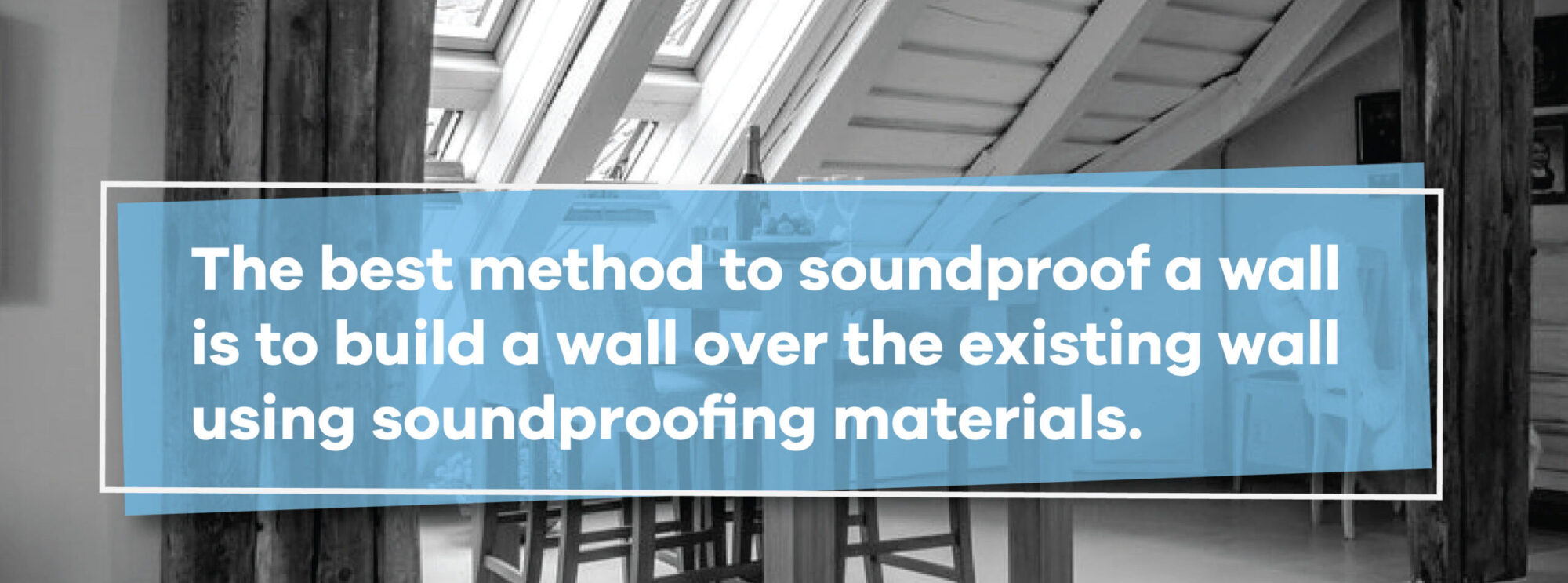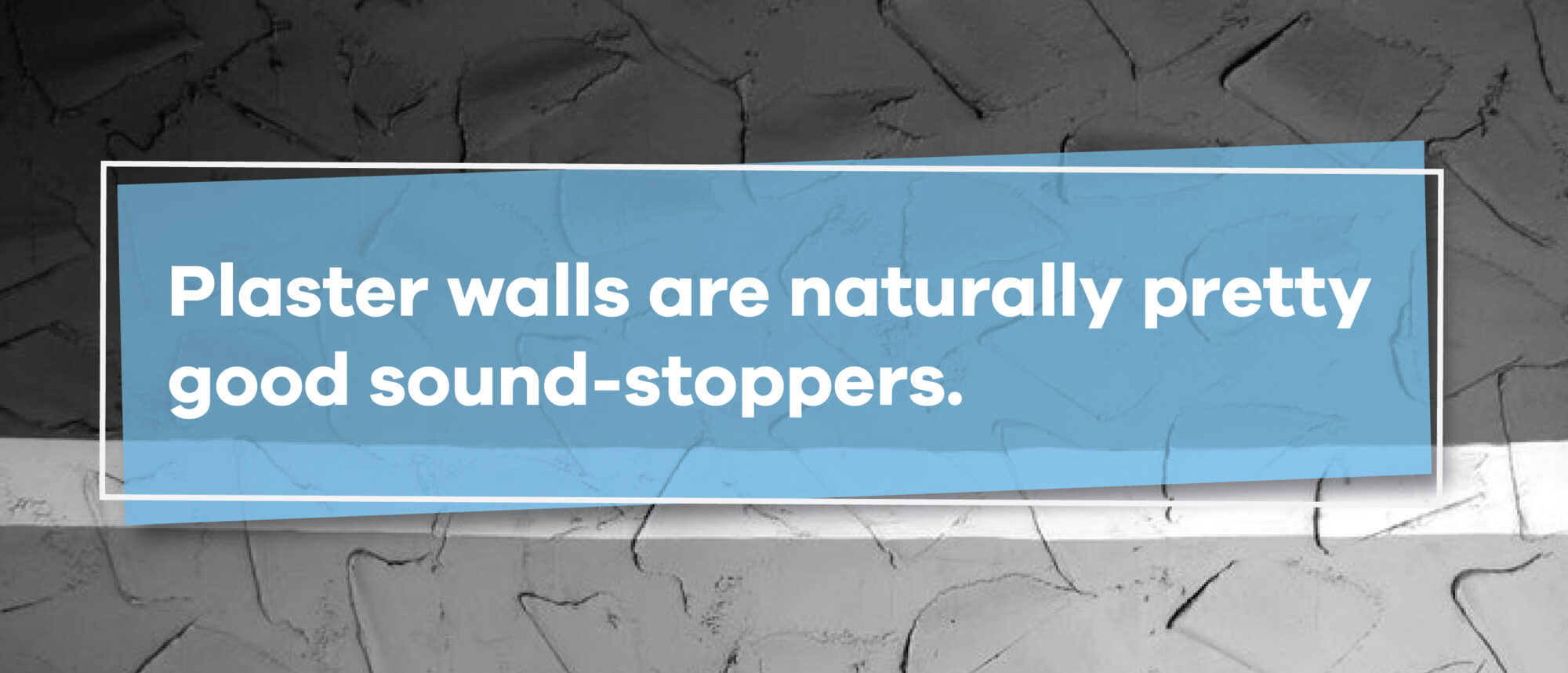Chapter 3: Soundproof Existing Walls
What’s the Best Way to Soundproof Existing Walls?
The most popular and cost-efficient way to soundproof a wall post-construction is to add mass and seal areas where noise seeps through. One of our favorite materials is our Quiet Barrier® soundproofing material. This material stops noise in its tracks and can be easily applied to drywall with its peel-and-stick application.
However, for the most soundproof room, you’ll want to consider adding soundproofing material to the existing wall, followed by a new layer of drywall.
What Is the Best Way to Soundproof an Existing Wall?

Our best method to soundproof a wall is to build a wall over the existing one using our soundproofing materials. Our IsoTrax® system keeps sound out and absorbs sound inside. Here’s how to install our recommended soundproofing system for minimal noise:
- Locate the studs in the wall with a stud finder. Mark them with chalk.
- Install the Quiet Barrier® HD onto the wall surface with roofing nails, 1 ¼-inch in size.
- Butt the edges of Quiet Barrier® HD together and try to minimize the number of seams.
- Place the Quiet Barrier® Tape over all seams.
- Install the IsoTrax® Soundproofing System over the barrier layer.
- Install the Echo Absorber™ Acoustic Panels between the IsoTrax® rails.
- Install the gypsum board, ?-inch Type X, on the IsoTrax® system with 1 ¾-inch fine thread drywall screws. Ensure the screws have 12 inches of space between them. Leave a ¼-inch gap between the new layers of gypsum board and the adjoining wall, ceiling and floor surfaces.
- Fill the gap with OSI Pro-Series SC-175 Acoustical Sound Sealant.
- Finish the gypsum board.
After you paint the wall your favorite color, no one will notice the soundproofing power that lies beneath.
What Are Other Soundproofing Options for Existing Walls?
To make a room as soundproof as possible, you will need to address the walls. If you don’t want to install a system like IsoTrax®, you can also blow insulation into an existing wall by drilling a hole in the wall and using specialized equipment. This will help reduce vibration and noise.
However, it’s best to install another layer of drywall and pack insulation or soundproofing foam between the layers by attaching the foam to existing wall.
Here are some more DIY tips to keep in mind:
- Install soundproofing materials to the wall where the noise is coming in.
- You can use MLV between drywall layers to significantly reduce noise.
- Make sure to use acoustic caulk to plug gaps, leaks and cracks around doors, switches and anywhere else noise might be seeping through.
- Incorporate soundproof panels to add color or art to a room as well as to improve the quality of sound and keep sound from traveling beyond the space.
How to Soundproof Walls Not Made of Drywall
Obviously, not all walls are made of drywall, especially in older buildings. This might be a good thing from the start, as other materials may naturally be heavier, more resistant to vibration and more soundproof than drywall. Here’s a look at soundproofing other materials walls might be constructed from.
How to Soundproof Plaster Walls
Plaster walls are already pretty good sound-stoppers, but if they aren’t meeting your soundproofing needs, there are changes you can make. First, seal any holes or gaps in the plaster wall because those will let sound get in.
You could also glue MLV to the wall, or you could build a layer of drywall around the plaster wall and fill it with soundproofing materials. There is also always the option to replace plaster and install a soundproofing system, but keep in mind that plaster can get messy. It might be worth trying options that don’t involve construction first.
As always, first identify the source of the sound to help you determine your course of action. Perhaps the solution can be found in soundproofing the windows, ceiling or floor instead of the wall. Consider trying these soundproofing methods:
To soundproof a window:
- Fill cracks with acoustical caulk around the frame.
- Hang soundproofing curtains.
- Install soundproof windows.
- Install a two-inch-thick acoustical foam mat. This might be a good choice for a bedroom, and it can be easily removed.
To soundproof a ceiling:
- Install
- Add MLV and then drywall.
To soundproof a floor:
- Install a flooring underlayment.
- Add carpet — not as good as a sound-absorbing underlayment, but it will help reduce noise.
How to Soundproof Brick Walls
Brick walls already work great at blocking out sound because brick is dense. However, because sound waves do not easily penetrate brick walls, they tend to bounce off them and affect the noise on the inside of the room.
The solution is to use sound-absorbing materials to improve sound in a brick room. Suspend acoustic panels from the ceiling or cover the walls with acoustic tiles, and furnish the room with soft furnishings and carpet. You also have the option to build a layer of drywall, though this might not be necessary.



